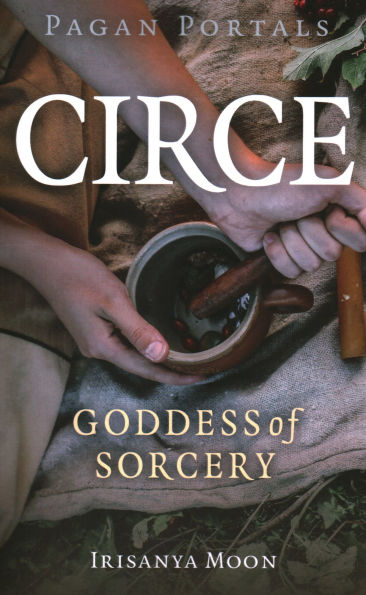Circe: Goddess of Sorcery, asks how would we see Circe if viewed through the eyes of women. The author comes out of the reclaiming tradition of witchcraft, known for a mix of feminism and social activism and this underpins her approach to understanding and getting to know Circe as a deity. The main myths involving Circe are retold and author Irisanya Moon offers her interpretation of their meaning. The author is interested in how the lens of gender changes the portrayal of classics.
The book reviews the mythologies of Circe touching on her different possible parentages and her role in the stories of Odysseus. Circe’s behavior has given her a mixed reputation and inspired fear. She is known as a temptress to married men, a sorceress who can turn men into pigs and who uses potions to cast spells. At best she is a healer. Occasionally she is the helper who steps in when no one else can or does. Often. she is portrayed in less than flattering ways. Related to Hekate and Medea, she connects to magic and to death. Moon writes that Circe was really a witch before this word was coined.
Since Circe worked with potions, Moon recommends getting to know herbs in your area and studying some Greek herbs and using them for magic. Transmutation also falls within Circe’s realm of expertise so she makes suggestions for magic to transform situations. Circe was seductive so glamour magick is proposed as a way to feel her presence. Circe has a connection to the dead and the underworld and necromancy is considered one of her realms. Necromancy in this book is more about working with spirits than raising the dead with practices like making space to remember the dead and offering libations. Moon asks readers: How does death and dying inform your magick?
Irinsaya Moon sees Circe as a deity that can help with one’s own sorcery. Alchemizing Anger into Justice promotes the idea that if you get angry about something you have enough energy to use that anger to direct a spell to fix or transform the cause of your anger. This is described as the activism that inspires you. Moon talks about ethics and mentions when it might be justified to use left hand path magic but she doesn’t get into details.
Moon lays out her approach to building a relationship with Circe. One of the first exercises is a guided journey to Circe. I gave this a try and found it was an interesting experience that inspired poetic visions. Some of the activities could be used for any new connection to deity. Moon stresses learning to communicate clearly in general and when dealing with deities. The techniques she discusses to identify emotions and to understand what your needs in a situation are would be useful in general and not just in a spiritual context.
This book is intended to help understand Circe and for those who want to go further, show ways to build a relationship with this deity. The stories are considered from a reclaiming perspective so if you want to get a scholar’s take on the classics, you would get a different read. As a lesser known deity, and one whose character deviates at times from “good behavior”, Circe does not have a large following so those seeking her out will appreciate the many suggestions for how to approach this Goddess. There are some instances where the book could have used more editing with words repeated twice or a sentence trailing off. I read the electronic copy so hopefully this was handled before the print copy was released.
Recommended.
~review by Elsie Smyte
Author: Irisanya Moon
Collective Ink, 2024
104 pages, $12.95

